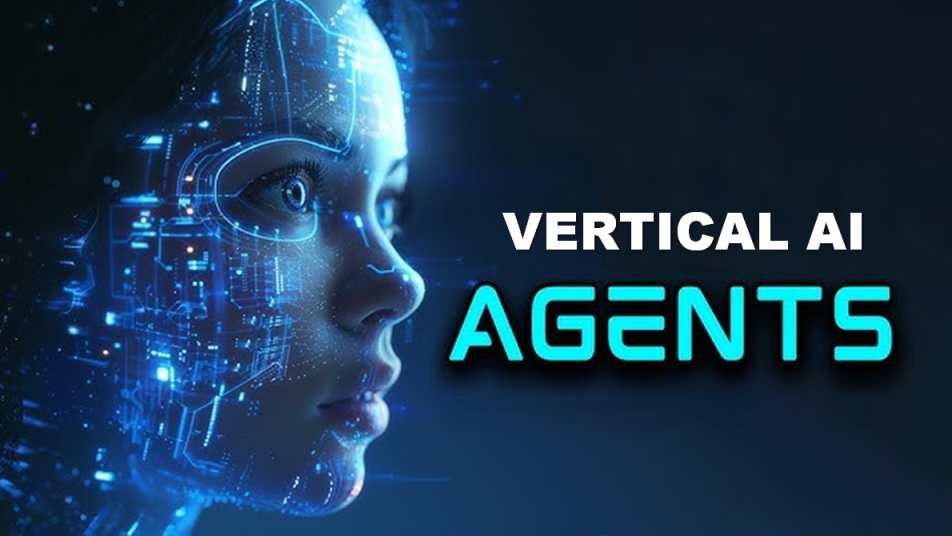Why vertical AI agents could be 10X bigger than SaaS: Insights from Y Combinator

Since its introduction in the early 2000s, SaaS (Software as a Service) has redefined how businesses access and use software. It replaced cumbersome, on-premise installations with scalable, cloud-based solutions, unlocking a $300 billion market and giving rise to over 300 unicorns. SaaS transformed software delivery and accessibility, becoming an integral part of modern enterprises.
Now, with artificial intelligence advancing at a breakneck pace, vertical AI agents—specialized tools designed to automate entire workflows—are poised to disrupt SaaS in the same way SaaS disrupted legacy software. These AI tools don’t just make workflows more efficient; they have the potential to replace entire teams and functions within enterprises.
This shift promises to radically reshape how businesses operate, delivering the kind of enterprise transformation that SaaS pioneered two decades ago. Though still in their infancy, these agents could revolutionize business operations and create a market even larger than SaaS. In a recent episode of Y Combinator’s podcast, host Gary, Jared Harge, and Diana explored this emerging trend, discussing why these agents could surpass SaaS, reshape industries, and drive the creation of billion-dollar companies.
Vertical AI Agents: A New Wave in Technology
Vertical AI agents are more than tools—they’re transformative solutions built to perform specific tasks with precision. They go beyond the incremental efficiency improvements of traditional SaaS platforms by automating workflows entirely. This shift has massive implications for businesses looking to streamline operations and reduce costs.
Experts predict that vertical AI agents could give rise to companies worth hundreds of billions of dollars. The comparison to SaaS is intentional: like the cloud revolution in the early 2000s, vertical AI agents represent a fundamental change in how software supports enterprises.
Lessons from the SaaS Boom
The rise of SaaS was fueled by a simple innovation: the XML HTTP request, introduced in 2004. This enabled web applications to become interactive, laying the groundwork for tools like Salesforce, which turned cloud computing into a mainstream enterprise solution. Over the next two decades, SaaS companies dominated venture capital funding and created over 300 unicorns.
Now, large language models (LLMs) are seen as a similar leap forward. They allow businesses to develop tools capable of automating not just software tasks but entire workflows. This capability is what makes vertical AI agents stand out—they replace teams, not just tools.
Why Vertical AI Agents Are Unique
Unlike SaaS, vertical AI agents provide specialized solutions that go deeper into specific problems. For example:
- MCH is replacing quality assurance (QA) teams with AI systems that handle testing entirely.
- Gig.ml automates customer support for companies like Zepto, managing tens of thousands of tickets daily.
- Sweet Spot develops AI agents that monitor government contracts, saving hours of manual labor.
These examples highlight how vertical AI agents address inefficiencies in specific industries, offering businesses a path to operate with leaner teams.
Startups, Not Giants, Lead the Charge
Large companies often struggle to dominate specialized markets due to the depth of expertise required. Google didn’t challenge payroll-focused SaaS products like Gusto because the complexities of payroll were too niche. Similarly, vertical AI agents thrive in areas where deep knowledge and focus matter most.
This opens opportunities for startups to innovate. Founders who identify repetitive tasks and build AI agents to tackle them are positioned to succeed. History shows that new technologies often reward early adopters, and vertical AI agents are no exception.
Disrupting the Workforce
These tools also have profound implications for the workforce. Traditionally, scaling revenue meant scaling headcount. Vertical AI agents challenge that model. Companies can now achieve significant growth with fewer employees by automating time-consuming tasks.
Consider the case of Rippling, which integrates HR tools into a single platform. By leveraging AI, it simplifies workflows and reduces reliance on multiple systems. Similarly, Salient automates voice calls for tasks like debt collection, replacing the need for large call center teams.
What Founders Should Focus On
For entrepreneurs, the key to success lies in identifying inefficient processes that are ripe for automation. Examples include:
- Medical billing for dental clinics, where tedious claims processing can be handled by AI.
- Technical screening for hiring, with AI tools managing candidate evaluations.
These areas may seem mundane, but they represent opportunities to build high-impact solutions.
The Bigger Picture
Vertical AI agents are poised to become a defining trend in enterprise technology. By combining automation with targeted expertise, they offer businesses a chance to operate more efficiently while creating immense value. The parallels to SaaS are clear, but the potential scale of vertical AI agents could be even greater.
As this market evolves, it’s becoming apparent that the most successful companies will be those that not only identify pain points but also deliver solutions that transform how work gets done. This isn’t just the next wave of enterprise software—it’s a complete rethinking of what software can achieve.
Watch the full episode in the YouTube video below. You can find the entire transcript here.
Here are the key takeaways from the episode.
Why Vertical AI Agents Could Be 10 Times Bigger Than SaaS
Market Opportunity
- The AI revolution parallels the SaaS boom of the 2000s but could grow even larger.
- Every SaaS unicorn could have a vertical AI agent equivalent.
- There’s potential for $300+ billion companies to emerge in this category of vertical AI agents.
- OpenAI once dominated the space, but competition has increased, creating a fertile ecosystem.
Vertical AI > SaaS
- AI replaces both software and labor costs.
- Companies spend significantly more on employees than software; smaller companies using AI will become far more efficient, requiring fewer people.
- AI continues to improve every three months.
- Full-on vertical AI agents are now replacing entire teams and functions.
Go-to-Market
- Selling to teams that AI will replace can lead to resistance and sabotage.
- Target high-level decision-makers who won’t feel threatened by automation.
Finding Opportunities
- Identify repetitive administrative tasks; there’s potential for billion-dollar AI agent startups in these areas.
- Leverage personal connections to industries:
- Example: A YC founder worked with his mother, a dentist, for a day and realized that LLMs could handle the processing claims she dealt with.
- Focus on “butter-passing jobs”—boring, repetitive tasks that people don’t enjoy doing.
Success Stories
- MTIC: Automates full QA testing with strong traction.
- Cap.AI: Developed a leading chatbot for developer support, reducing the need for large dev-rel teams.
- Salient: Uses AI for voice calling in auto loan collections and is now live with major banks.
Future Outlook
- AI tools can help leaders manage larger organizations by enhancing their ability to process information.
- Traditional constraints on company size and management may shift with AI augmentation.
- Like SaaS, vertical AI agents are expected to remain specialized rather than consolidating into single large platforms.




